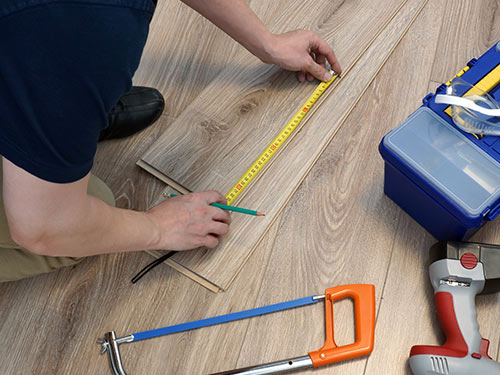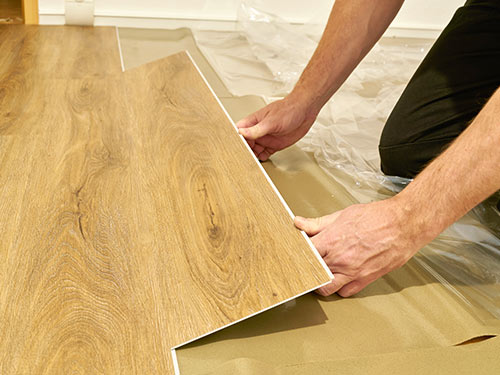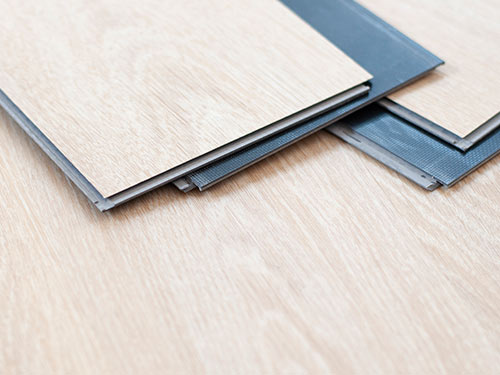Back to Flooring Products
Luxury Vinyl Plank vs Laminate Flooring: Which Is Best for Your Home?

When choosing flooring for your home, two of the most popular and budget-friendly options on the UK market are laminate flooring and luxury vinyl flooring (LVT). Both offer appealing aesthetics, simple installation, and great performance for modern lifestyles. But how do they differ, and which one is better for your needs?
In this guide, we'll break down everything you need to know about laminate vs vinyl flooring – from durability and water resistance to installation and cost. Whether you're renovating your living room, kitchen, or bathroom, this side-by-side comparison will help you make an informed decision that suits your budget and space.
We’ll also cover room-by-room suitability, cleaning tips, and when to choose one over the other. By the end, you’ll have a clear picture of which flooring fits your lifestyle best.
What is Laminate Flooring?
Laminate flooring is a multi-layered synthetic product designed to replicate the appearance of natural wood or stone. Its core is typically made from high-density fibreboard (HDF), topped with a photographic layer that mimics real wood, and finished with a protective transparent wear layer for durability.
This type of flooring is known for being affordable, easy to install, and visually attractive. Laminate is available in a wide range of colours and styles, making it suitable for many interior design themes. Thanks to its click-lock system, laminate is often chosen for DIY installations in living rooms, bedrooms, and hallways. For professional help, explore our laminate floor fitting service.
However, because traditional laminate is not waterproof, it may not be suitable for high-moisture areas like bathrooms or utility rooms. Some modern laminates now include water-resistant features, but caution is still advised where water exposure is common.
What is Vinyl (LVT) Flooring?
Luxury Vinyl Tile (LVT) flooring is a multi-layered synthetic flooring material that is designed to mimic the appearance of wood, stone, or ceramic. Made primarily from PVC (polyvinyl chloride), LVT is known for its exceptional water resistance, flexibility, and durability.
Unlike laminate, LVT is fully waterproof, making it ideal for moisture-prone areas like kitchens, bathrooms, and basements. It comes in a variety of formats, including planks and tiles, and can be installed as a floating floor or glued down, depending on the product type. For guaranteed performance and flawless installation, we recommend our LVT floor fitting service in London.
LVT floors typically feature multiple layers: a backing layer, a core layer (such as WPC or SPC for added stability), a decorative printed film, and a transparent wear layer that protects against scratches, stains, and everyday wear and tear. This construction gives LVT a softer and more comfortable feel underfoot compared to laminate.
Key Differences Between Laminate and Vinyl Flooring
While both laminate and vinyl flooring are attractive, affordable, and easy to install, several key differences can influence your decision. Here's how they compare:
- Water Resistance: Vinyl is 100% waterproof; laminate is water-resistant at best.
- Durability: Both are durable, but vinyl handles moisture and impact better.
- Comfort: Vinyl tends to feel softer and warmer underfoot due to its flexible construction.
- Appearance: Laminate often has a more realistic wood texture and look, though high-end vinyl can be very convincing.
- Installation: Laminate typically uses a click-lock system; vinyl offers more variety, including peel-and-stick, click-lock, and glue-down options.
- Sound: Laminate can be noisier underfoot unless paired with a good underlay; vinyl is quieter.
- Maintenance: Vinyl is easier to maintain and more forgiving with spills; laminate requires more care around moisture.
- Price: Both are budget-friendly, though laminate often starts slightly cheaper per square metre.
Room-by-Room Suitability
Choosing the right flooring often depends on where it will be installed. Here’s a breakdown of how laminate and vinyl perform in different rooms around the house:
- Living Rooms: Both laminate and vinyl work well here. Choose based on style preference and desired comfort.
- Bedrooms: Either option is suitable, but laminate may offer a more natural wood-like appearance.
- Kitchens: Vinyl is the better choice due to its waterproof properties. Laminate may be damaged by spills and humidity.
- Bathrooms: Vinyl is ideal for bathrooms, while laminate is not recommended due to water exposure.
- Hallways: Both are durable enough for high-traffic areas. Consider adding an underlay for the laminate to reduce noise.
- Basements: Vinyl is preferable because of its water resistance and adaptability to lower humidity levels.
Installation & Maintenance

Both laminate and vinyl flooring are designed for straightforward installation, but their methods and maintenance requirements differ slightly.
Laminate flooring generally uses a click-lock floating floor system, which makes it a popular choice for DIY enthusiasts. However, care must be taken to avoid water infiltration, especially around edges and seams. Regular maintenance involves dry sweeping, vacuuming, and occasionally damp mopping with a suitable laminate cleaner.
Vinyl flooring offers a wider range of installation methods – including glue-down, click-lock, and loose lay options. It’s more forgiving of moisture and can handle spills without issue. Maintenance is simple: sweeping, vacuuming, and mopping with a vinyl-safe solution keeps it looking fresh.
In high-traffic or wet areas, vinyl tends to be more resilient, while laminate may require more protection to maintain its appearance over time.
Cost Comparison
Both laminate and vinyl flooring are cost-effective options for homeowners, but there are slight differences in pricing that may influence your decision.
Laminate flooring tends to be slightly cheaper, with prices starting around £8–£12 per square metre for entry-level products. Higher-end designs with water-resistant features may range between £15–£25 per square metre.
Vinyl flooring (especially LVT and SPC types) usually starts at around £12–£18 per square metre, with premium options reaching £30 or more, depending on design and core construction.
Installation costs can also vary. Both flooring types are suitable for DIY, but professional fitting may cost more for glue-down vinyl options due to the additional preparation and adhesive work involved.
When considering long-term value, vinyl may offer greater durability in wet environments, potentially reducing the need for repairs or early replacement in those areas.

Which One Should You Choose?
When deciding between laminate and vinyl flooring, consider your home’s specific needs and lifestyle. Both have their strengths, and the right choice often comes down to location, usage, and personal preferences.
- Choose laminate flooring if you want a cost-effective option with a realistic wood appearance for dry areas like living rooms, bedrooms, or hallways.
- Choose vinyl flooring if you're looking for maximum water resistance and durability in areas such as kitchens, bathrooms, or basements.
If you have pets, children, or anticipate heavy traffic, vinyl may provide greater long-term resilience and lower maintenance. On the other hand, if visual authenticity and a budget-friendly price are your main concerns, laminate could be a better choice.
Still unsure? Speak to our experts for tailored advice and product recommendations to suit your space and style.
Frequently Asked Questions
Is vinyl flooring waterproof?
Yes, most types of vinyl flooring, especially LVT and SPC, are 100% waterproof, making them suitable for wet areas like bathrooms and kitchens.
Can you put laminate flooring in a bathroom?
It’s not recommended. While some water-resistant laminates exist, they’re still vulnerable to water damage if moisture seeps into the seams.
Which is more durable – laminate or vinyl?
Vinyl generally offers better durability in high-moisture or high-traffic environments, while laminate performs well in dry, residential settings.
What’s easier to install – laminate or vinyl?
Both are relatively easy to install. Laminate typically uses a click-lock system, while vinyl offers more options, including glue-down and loose lay.
Do I need underlay for vinyl or laminate flooring?
Laminate usually requires an underlay for cushioning and sound reduction. Vinyl may not need underlay, depending on the product, though some benefit from it for added comfort.